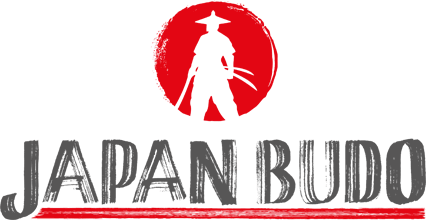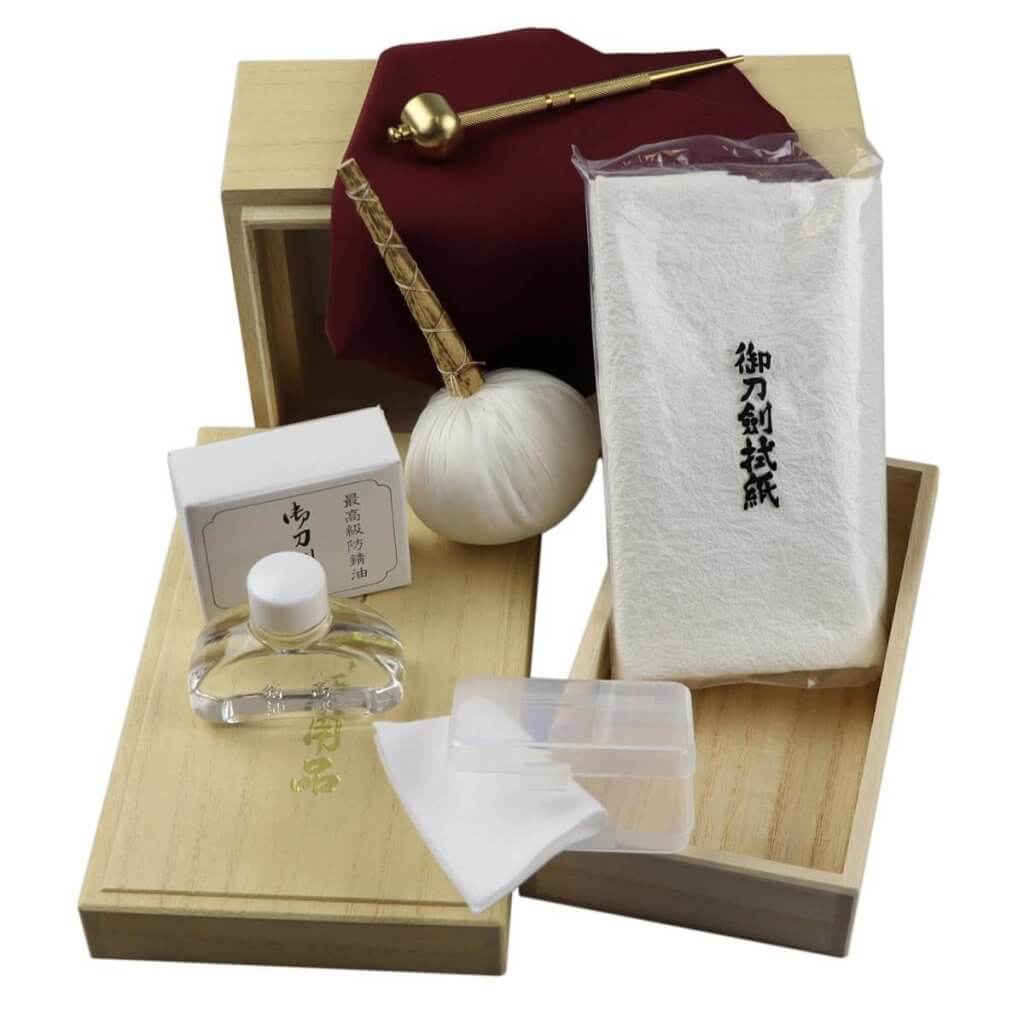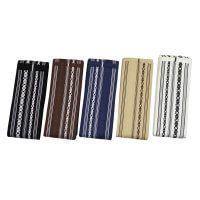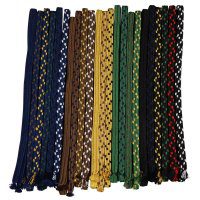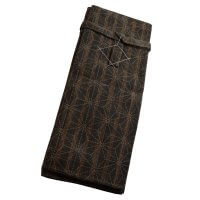Nihonto are an impressive and engaging hobby. If you have decided to buy a Nihonto, we can congratulate you on your decision.
To maintain the condition of your new sword, a few tips and tricks are helpful. A basic set of accessories will ensure lasting enjoyment of the sword.
This accessory makes sense for every Nihonto owner, whether a historical samurai sword or a modern original sword from Japan.
Underlay

The blade is particularly susceptible to scratches when the centreboard is dismantled because the blade rests completely on the ground when it is put down. A suitable Underlay.
The mat from our range has a microfibre surface. The mat features an art print of a sword by master blacksmith Sadatoshi Gassan.
The blade of a Japanese sword can be placed on the mat with a total length of 110 cm.
Fukusa

Fukusa is a cloth that is held in the hand to hold the sword blade. Nihonto blades are made of steel and this can rust. Old swords are usually made of slightly softer steel and therefore tend to be even more susceptible to rust.
It is therefore important to protect the blade from the moisture and acids in human sweat.
Just touching the blade with your fingers can leave a rusty version of your own fingerprint on the blade.
To protect against this, it is always advisable to use a cloth when holding the blade.
Such accessories from Japan are usually purple in colour. A colour that is considered particularly classy.
Face mask
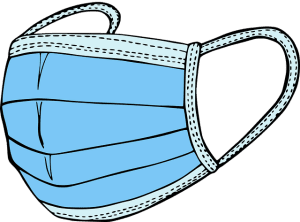
For the reasons described in the "Fukusa" section, spit and moisture from the breath can also damage a blade in the long term.
We do not offer such masks in our shop. During the Corona period, most people have involuntarily built up stocks of them. Otherwise, they are available from pharmacies at favourable prices.
Makura
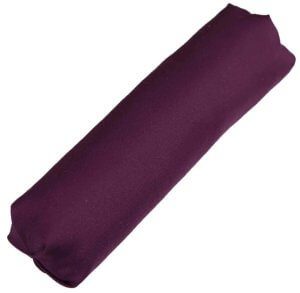
Makura means cushion. In connection with Japanese swords round cushions is used to prevent the sword blade from resting on something that could scratch it.
Just like fukusa, makura for swords are usually purple in colour. The use of such a cushion always makes sense when the sword/blade is put down. Regardless of whether an additional pad is used.
Centreboard care set
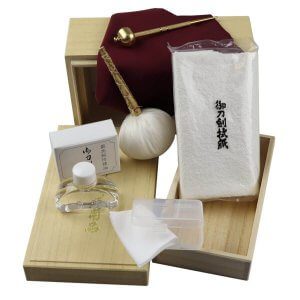
As the owner of a high-quality sword, it is always worth purchasing a Care sets for Katana. Such sets consist of several components that are helpful when handling the blade. The set shown here contains the following, for example:
Fukusa
This set contains a silk scarf to hold the sword. The function of this cloth has already been described above.
Mekugi Nuki
A small hammer made of brass. This is used to press the cotter pin (mekugi) out of the sword hilt so that the hilt can be detached from the blade tang.
Rice paper (washi)
Japanese rice paper is the traditional tool used to remove old oil during sword maintenance so that fresh oil can be applied.
Sword powder (Uchiko)
This set contains a bale of sword powder. This is obtained from the powder of the Uchigumori stone in Japanese care sets. This stone is used for polishing swords.
The powder has an abrasive effect. It therefore only makes sense to use this powder if there is a risk of rust forming, for example after accidentally touching the blade with your fingers.
Intensive application of the powder to individual areas of the blade can impair the appearance of the polish.
Sword oil (Choji Abura)
Choji Abura is clove oil for the care of blades. On the one hand, the oil dissolves the first (still invisible) rust deposits on the blade and protects the blade from future rust formation.
The oil also leaves behind a pleasant fragrance.
A soft cotton cloth
The cloth is used to apply and distribute the aforementioned oil.
